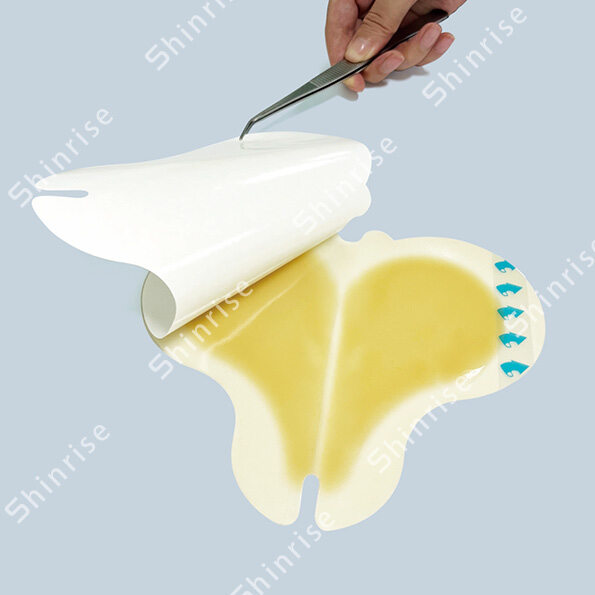Email cannot be empty
Password cannot be empty
Email format error
Email cannot be empty
Email already exists
6-20 characters(letters plus numbers only)
The password is inconsistent
Email format error
Email cannot be empty
Email does not exist
6-20 characters(letters plus numbers only)
The password is inconsistent


Understanding Hydrocolloid Dressing Sizes: A Comprehensive Guide
Hydrocolloid dressings have become a go-to solution for wound care, offering benefits like moisture retention, protection from infection, and enhanced healing. One of the most important considerations when using these dressings is selecting the right size. The proper size ensures optimal coverage, comfort, and healing efficiency. In this blog, we’ll delve into the world of hydrocolloid dressing sizes, covering everything from their importance to choosing the best fit for different wound types.
What Are Hydrocolloid Dressing ?
Before we dive into the details of hydrocolloid dressing sizes, let’s first understand what these dressings are. Hydrocolloid dressings are unique wound care products made from materials that form a gel when they come into contact with wound exudate. This gel creates a moist environment that promotes healing by keeping the wound protected and hydrated.
These dressings are ideal for wounds that are low to moderately exuding, such as ulcers, pressure sores, and minor burns. Their occlusive nature also helps prevent bacterial contamination, making them a preferred choice for wound management.
Why Are Hydrocolloid Dressing Sizes Important?
Choosing the right hydrocolloid dressing size is crucial for ensuring effective wound care. If the dressing is too small, it may not fully cover the wound, leaving parts of it exposed to potential infection. On the other hand, an oversized dressing may cause discomfort or excess moisture buildup, which can slow the healing process.
The right size ensures that the dressing adheres well to the skin, creates the necessary moist environment for healing, and provides protection without irritation or discomfort. Here are some key reasons why choosing the correct size is important:
Complete Wound Coverage: The dressing should cover the wound and extend slightly beyond its edges to ensure that it seals the area properly.
Comfort and Flexibility: A well-sized dressing allows for better movement, especially on joints or areas prone to friction.
Efficient Healing: The right size prevents excessive moisture buildup, which could lead to maceration of the surrounding skin.
Available Hydrocolloid Dressing Sizes
Hydrocolloid dressings come in various sizes to accommodate different wound types and locations. Most manufacturers provide a range of standard sizes, but there are also custom sizes available for specific medical needs. Here are some of the most common sizes you may encounter:
- Small (4cm x 4cm to 6cm x 6cm): Ideal for smaller wounds like minor cuts, abrasions, or smaller pressure ulcers. These sizes are perfect for covering wounds on hands, feet, and other localized areas.
- Medium (10cm x 10cm to 15cm x 15cm): Suitable for moderately sized wounds such as larger abrasions, second-degree burns, or postoperative wounds. These sizes are often used for pressure ulcers or venous leg ulcers.
- Large (20cm x 20cm and above): Best for larger wounds, such as extensive burns, large pressure sores, or surgical incisions. These larger dressings are designed to cover a wider area, providing complete protection and maintaining a moist environment over larger wounds.
It’s important to note that hydrocolloid dressings are available in a variety of shapes, including squares, rectangles, and ovals, each serving different needs depending on the wound location.
How to Choose the Right Hydrocolloid Dressing Size
Choosing the correct size depends on several factors, including the type of wound, its size, and its location on the body. Here are some guidelines to help you select the appropriate dressing:
1. Measure the Wound
Before applying a hydrocolloid dressing, measure the wound accurately. The dressing should extend at least 2-3 cm beyond the wound edges to ensure that it adheres properly and prevents contamination. For example, if the wound is 5 cm in diameter, choose a dressing that is at least 8 cm in diameter.
2. Consider the Wound Location
Different parts of the body may require different sizes based on their shape and movement. For instance, joints like elbows and knees may need flexible and appropriately sized dressings that accommodate movement without peeling off. In contrast, areas like the back or thighs may allow for larger, more stable dressings.
3. Wound Exudate Level
The amount of exudate (wound fluid) is another factor to consider when choosing the right size. Wounds that produce more exudate may require larger dressings to absorb the moisture without needing frequent changes.
4. Elect Hydro Hydrocolloid Thin Dressing
For wounds that need a thinner, more flexible option, consider the Elect Hydro Hydrocolloid Thin Dressing. This dressing is designed for wounds that require a more delicate touch, offering the same benefits as standard hydrocolloid dressings but in a thinner profile. It’s ideal for wounds on sensitive areas like the face or neck, where a bulky dressing might be uncomfortable.
Types of Hydrocolloid Dressings and Their Applications
In addition to understanding hydrocolloid dressing sizes, it's also essential to know the different types of hydrocolloid dressings and their specific applications. Each type is tailored for particular wound types and needs.
1. Thin Hydrocolloid Dressings
Thin hydrocolloid dressings are lightweight and flexible, making them ideal for low-exuding wounds or wounds on areas that move frequently. They are less bulky and blend well with the skin, making them a great option for facial wounds or areas where a larger dressing might be too noticeable.
2. Standard Hydrocolloid Dressings
These are the most commonly used hydrocolloid dressings. They come in a variety of sizes and shapes and are used for low to moderately exuding wounds, such as pressure ulcers or minor burns. The standard hydrocolloid dressing size typically ranges from small to medium and can be used for a variety of wound types.
3. Hydrocolloid Foam Dressings
Foam hydrocolloid dressings offer additional absorption for wounds that produce more exudate. These dressings provide cushioning, making them suitable for wounds on bony prominences or pressure sores. Foam dressings often come in larger sizes, providing extra coverage for more extensive wounds.
Benefits of Using Hydrocolloid Dressings
There are several benefits to using hydrocolloid dressings, regardless of the size. Here are some of the key advantages:
1. Moist Environment for Healing
Hydrocolloid dressings create a moist environment, which is crucial for wound healing. This moisture allows cells to regenerate faster and helps wounds close up more quickly.
2. Protection from Contaminants
The occlusive nature of these dressings helps protect wounds from external contaminants, such as bacteria and dirt. This is especially important for wounds that are more prone to infection, such as ulcers and surgical wounds.
3. Comfortable and Easy to Use
Hydrocolloid dressings are known for their comfort and ease of application. Once the correct hydrocolloid dressing size is chosen, they adhere well to the skin and stay in place for several days, reducing the need for frequent changes.
4. Reduced Pain During Dressing Changes
Unlike some other types of dressings, hydrocolloids don’t adhere to the wound bed itself. This means that when you remove the dressing, there’s less risk of disrupting the healing tissue, resulting in a less painful dressing change experience.
Tips for Proper Application and Removal
To get the most out of your hydrocolloid dressing, it’s important to apply and remove it correctly. Here are some tips to ensure proper use:
1. Clean and Dry the Wound
Before applying the dressing, clean the wound thoroughly with a saline solution or wound cleanser. Make sure the surrounding skin is dry, as moisture can affect the adhesion of the dressing.
2. Warm the Dressing
Warming the dressing between your hands for a few seconds before applying it can help it adhere more effectively. This is especially useful for larger dressings or those applied to areas with a lot of movement.
3. Peel Gently for Removal
When removing a hydrocolloid dressing, do so slowly and carefully. Peel from the edges, and if the dressing sticks to the skin, use warm water or an adhesive remover to help loosen it without causing damage to the wound or skin.
Conclusion: The Importance of Choosing the Right Hydrocolloid Dressing Size
In conclusion, understanding hydrocolloid dressing sizes is essential for effective wound care. Whether you’re treating a small cut or a larger pressure ulcer, selecting the right size ensures that the dressing provides optimal protection, comfort, and healing. By considering factors such as wound size, location, and exudate levels, you can make an informed decision on the best hydrocolloid dressing for your needs.
With options ranging from thin, flexible dressings to more standard and foam variants, there’s a hydrocolloid dressing available for every type of wound. Choosing the right size and type can make all the difference in promoting fast and efficient healing, while also providing comfort and protection.

